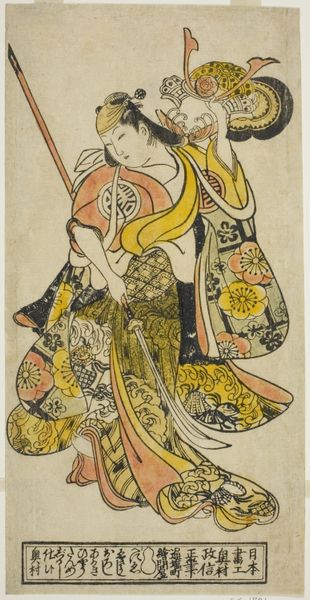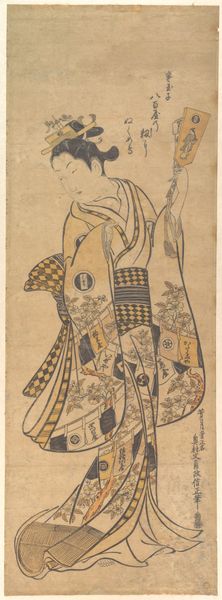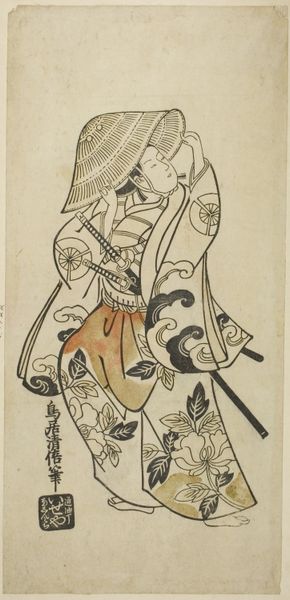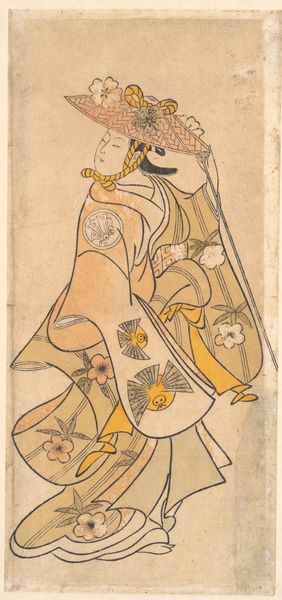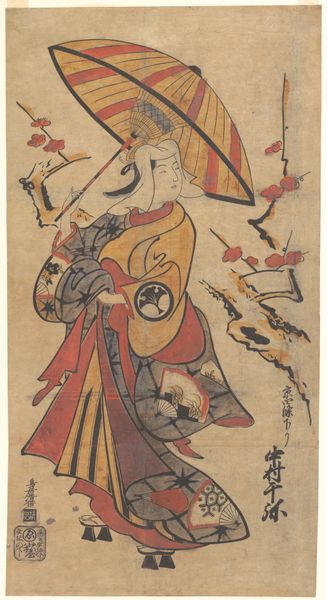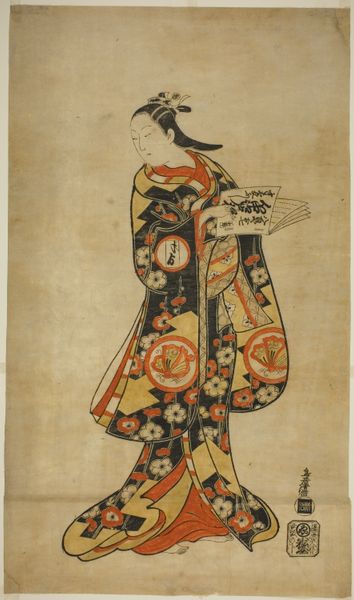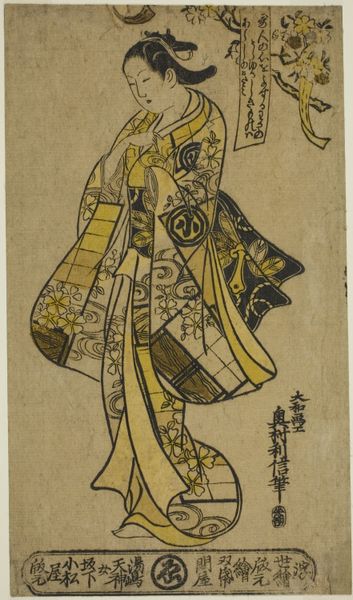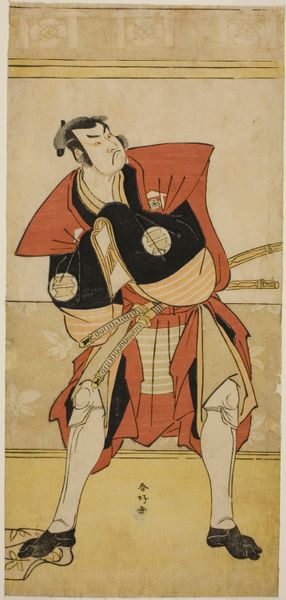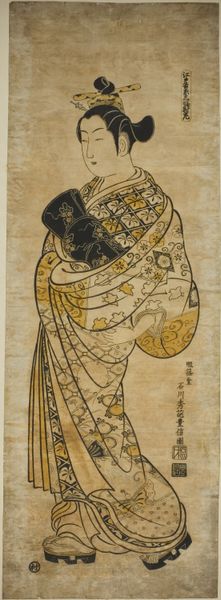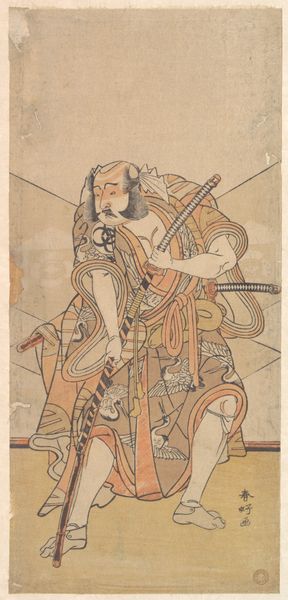
print, woodblock-print
#
portrait
# print
#
asian-art
#
ukiyo-e
#
figuration
#
woodblock-print
Dimensions: 56.8 × 27.9 cm
Copyright: Public Domain
Editor: So, this woodblock print, "A Beauty Walking" by Sugimura Jihei, dates back to around the 17th century. I’m immediately struck by how the figure is adorned with scenes within her kimono—almost like she’s wearing stories. What narratives or meanings do you think are embedded in these images? Curator: The scenes woven into the kimono tell a powerful story. Consider that clothing, especially for women in this period, functioned as a potent symbolic language. Note how these aren’t random decorative patterns, but carefully chosen vignettes, mirroring cultural memory and aspirations. Can you identify any specific figures or symbols repeated on the garment? Editor: I see figures who look like actors performing scenes, along with domestic architecture… gardens, maybe? Does this relate to specific theatrical traditions or social identities of the time? Curator: Precisely. This recalls Kabuki theater – immensely popular during this era - and an ideal of cultivated leisure. The woman, likely a courtesan or a high-ranking figure, is consciously displaying these motifs. They were shorthand for education, taste, and even a type of aspirational identity. She’s performing a role, wouldn’t you agree? How do the colours strike you? Editor: The muted palette feels sophisticated, not overtly flashy. Maybe reinforcing a sense of inner worth rather than ostentatious display? Curator: The colors and detailed patterns also tell a nuanced story. Ukiyo-e prints often played with delicate gradations, subtly indicating status without being too obvious. Also notice her gait, slow and subtle but also with precision, just a small gesture, wouldn’t you say? All contribute to crafting a specific visual rhetoric for her persona and audience. It becomes something of a shared secret, culturally transmitted. Editor: That's fascinating. So it's less about the individual and more about participating in a visual language of status and culture? It’s a performance both literally and symbolically? Curator: Exactly! And this performance preserves shared meaning across time, bridging personal and collective experience through symbolic representation. Editor: I see the piece in a completely new light now. Thank you for helping me decipher its embedded symbolism! Curator: It’s amazing what symbols can tell us, isn’t it?
Comments
No comments
Be the first to comment and join the conversation on the ultimate creative platform.
